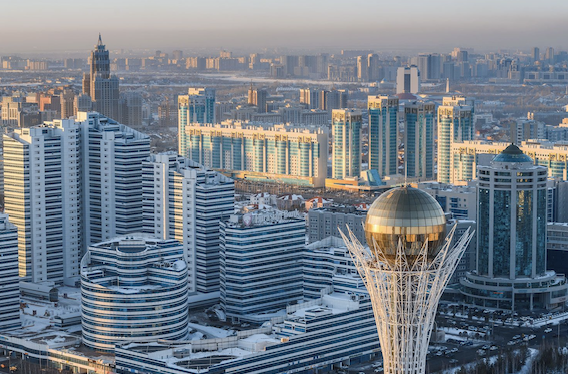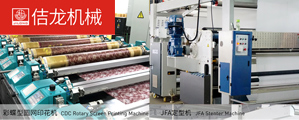Textile industry opportunities between China and Central Asian countries
Jul 25, 2025 | by Zhong Mengxia
On June 18, 2025, the second China-Central Asia Summit was held in Astana, Kazakhstan. The member states of the China-Central Asia mechanism emphasized the importance of further deepening multilateral cooperation based on principles of equality, mutual respect, and mutual benefit. They declared their commitment to continue strengthening friendly relations, deepening political trust, and expanding economic cooperation among the six nations.
In recent years, cooperation between China and Central Asian countries in the textile sector has also deepened significantly, particularly under the Belt and Road Initiative. This collaboration has strengthened industrial chain coordination, technological exchange, and market expansion. According to data from China's General Administration of Customs, the total trade volume between China and Central Asian countries reached $94.8 billion USD in 2024, an increase of $5.4 billion USD compared to the previous year. Kazakhstan led the trade, accounting for over 46% ($43.8 billion USD), followed by Kyrgyzstan ($22.7 billion USD, 24%), Uzbekistan ($13.7 billion USD, 14.5%), Turkmenistan ($10.6 billion USD, 11%), and Tajikistan ($3.8 billion USD, 4%).

Textile trade overview
Kazakhstan
China-Kazakhstan trade surpassed $43.8 billion USD in 2024. Chinese exports to Kazakhstan reached $27.9 billion USD. With the deepening of the Belt and Road Initiative, Chinese products have significantly increased their market penetration in Kazakhstan, covering core sectors like textiles, machinery, electronics, and automobiles. China's exports of cotton T-shirts and undershirts to Kazakhstan have grown consistently in both value and volume. In 2024, exports of these items were valued at $1.11 billion USD, with 99% originating from Xinjiang.
Kazakhstan's textile industry focuses on cotton, producing high-quality cotton but lacking a complete industrial chain, leading to import dependence. The sector faces challenges like outdated technology and aging equipment. The government is actively promoting foreign investment and automation upgrades. Kazakhstan primarily exports raw textiles like cotton yarn and fabric, with some processed garments exported to Russia and neighboring Central Asian countries.
Kyrgyzstan
As a core area in the Silk Road Economic Belt, Kyrgyzstan hosts Central Asia's largest wholesale and retail markets. Since 2023, it has become a significant partner for Keqiao (China's major textile hub) in textile trade. The two sides exhibit strong industrial synergy in textiles. In May 2024, over 70 Kyrgyz entrepreneurs traveled to the Keqiao Textile Expo for purchasing.
Kyrgyzstan has a traditional textile industry with numerous garment factories handling substantial processing orders for Russia. These factories mainly use Chinese fabrics. Its main exports are finished garments (e.g., chiffon, organza products) and OEM products, primarily destined for Russia and some Central Asian markets.
Tajikistan
Tajikistan mainly exports cotton yarn, knitted socks, medical cotton, and finished garments to over 20 countries. In 2023, its cotton fiber production was 127,000 tons, with plans to increase this to 138,000 tons by 2025. In recent years, China has expressed support for its enterprises to invest in textile industrial parks, etc.
Turkmenistan
Turkmenistan currently has over 70 textile enterprises, forming an industrial chain from fiber production to garment manufacturing. Most are concentrated in and around the capital, creating a relatively well-developed industrial cluster. Approximately 80% of Turkmenistan's textiles are exported, with main destinations including Turkey, Russia, China, and Kazakhstan. Key export products are cotton yarn, grey fabric, and finished garments.
Uzbekistan
As a top-ten global cotton exporter, Uzbekistan possesses abundant raw cotton resources and a labor advantage. Last year, Uzbekistan exported textiles worth nearly $2.9 billion USD. Cotton yarn was the top export ($1.237 billion USD), followed by finished garments ($1.124 billion USD), knitted fabrics ($292.1 million USD), and woven fabrics ($145.9 million USD).
Despite strong export performance, Uzbekistan's textile sector faces challenges: a low proportion of high-value-added exports, room for improvement in product quality, and underutilized capacity due to insufficient raw material supply. In May of this year, a delegation from the Uzbekistan Textile Industry Association had a conversation with the Xinjiang Production and Construction Corps Committee. Xinjiang is a major hub for China's cotton textile industry, home to many technically proficient textile enterprises. Both sides agreed to strengthen collaboration between companies and promote greater connectivity within the bilateral textile industry.








